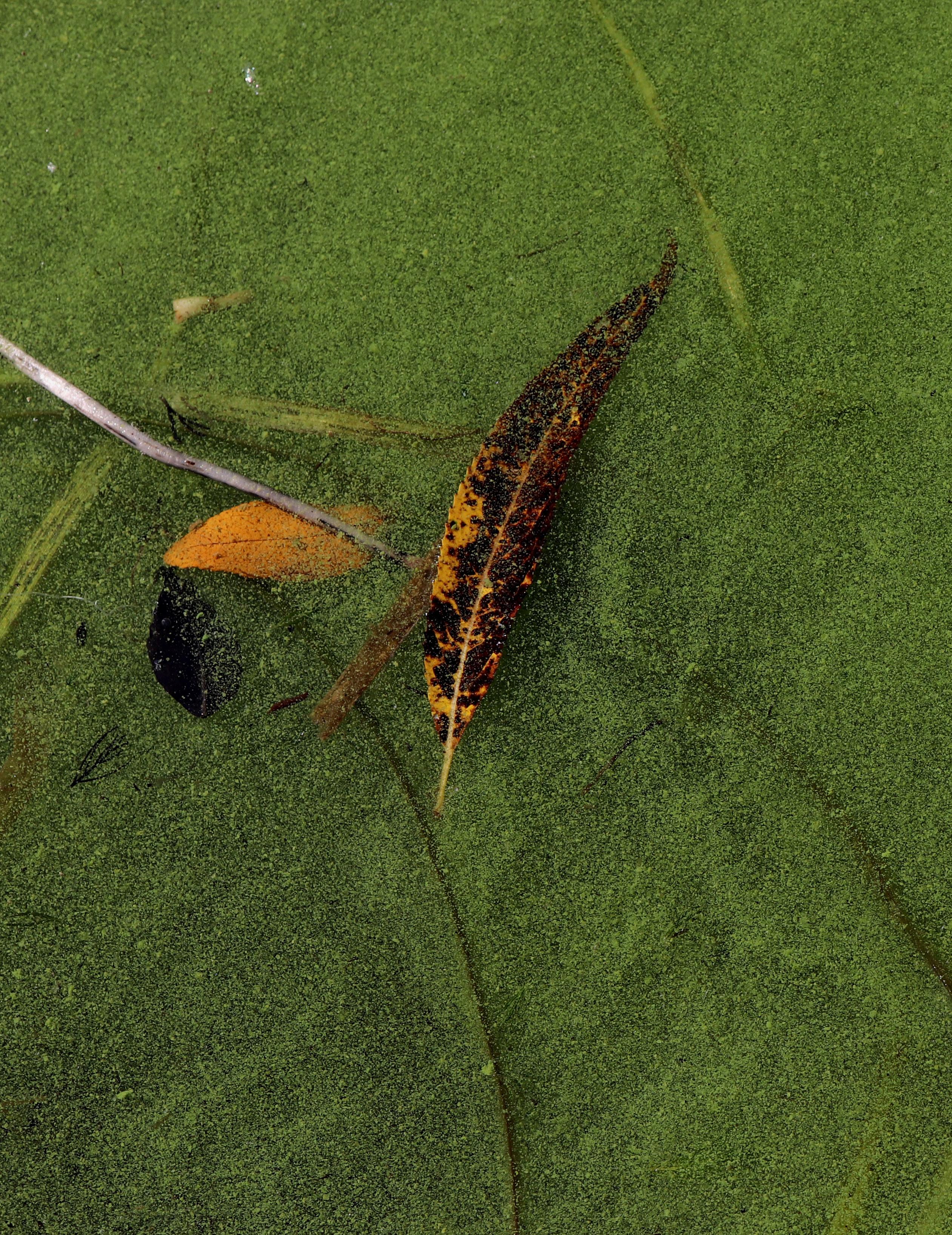
4 minute read
Blue-Green Algae Blooms | What To Know And How To Stay Safe
Jonna Mayberry
Jonna Mayberry is a public information officer in the DNR’s Office of Communications.
Is that lake scum dangerous? Should my pet go in the water? Should my family swim in it? Questions like these often arise in the summer.
And with good reason, when it comes to blue-green algae.
Also known as cyanobacteria, blue-green algae are photosynthetic bacteria that many people refer to as “pond scum.” Blue-green algae are most often green, but they can also be blue-green, hence the name, or reddish-purple or brown.
Blue-green algae comprise a portion of a waterbody’s phytoplankton, or microscopic algae, which consume carbon dioxide and produce oxygen in waterbodies. Some aquatic organisms eat blue-green algae, but they are lower-quality food compared to true algae such as diatoms and green algae.
Blue-green algal blooms develop when populations grow to high levels that discolor the water, or when calm conditions allow blue-green algae to form floating scums on a lake surface. When blue-green algae reach bloom densities, they can reduce light penetration, limiting aquatic plant growth.
When a bloom dies off, the blue-green algae cells sink and are broken down by microbes. This breakdown process uses oxygen and can decrease the amount of oxygen available in the water for fish and other aquatic life, sometimes resulting in fish kills.
In addition, some blue-green algae species can produce toxins, though this doesn’t always happen, and there is no easy way to tell when blue-green algae are producing them. Floating scums or mats of blue-green algae or opaque “pea soup” water might indicate possible high toxin concentrations if toxins are being produced by that bloom.
People and pets can be exposed to these toxins by swallowing contaminated water, inhaling water droplets or spray (such as during water skiing) or through contact with the skin. Toxin effects include vomiting and diarrhea from ingestion, asthma-like reactions from inhalation and rash from skin exposure.
Animals can have very serious symptoms, including seizures, organ damage and even death if they ingest enough toxins.
When To Skip Swimming
Know what to look for to decide if a waterbody is safe.
“Usually, if you see water that looks noticeably dirty or discolored, or if there are a lot of tiny particles in it, that indicates there might be a blue-green algae bloom,” said Gina LaLiberte, the DNR’s statewide harmful algal bloom coordinator. “You might want to look for better conditions to swim in.”
Blue-green algae can be especially harmful to young children and dogs, LaLiberte said.
“Young kids aren’t as good at keeping water out of their mouth as an adult or an older child would be,” LaLiberte explained, while dogs often intentionally drink the water.
“For little kids and dogs, you really want to pick the clearest possible conditions for them. And because they have a smaller body size, it doesn’t take ingesting as much blue-green algae to possibly make them sick.”
Climate Affects Blooms
Changing climate conditions have an effect on blue-green algae blooms, LaLiberte said.
“If you’ve got really warm water temperatures, the more desirable kinds of algae don’t grow as well, but blue-green algae grow really well,” LaLiberte said.
“We’re also seeing an increase in intense rainstorms in Wisconsin, where you have 1 inch or more of rain falling in a single event. Those heavier rainstorms are a great way for nutrients and sediments to make their way into lakes.
“Those nutrients can fuel the growth of a lot of things, but they can also fuel the growth of blue-green algae.”
“If lakes don’t have ice on them well into December or even January, blue-green algae populations don’t die off as fast,” LaLiberte explained. “And then if you have a really short period of ice cover in the winter and you get an early spring thaw, then those blue-green algae get a jump start on growth.
“Those extended growing seasons are really having an effect. And we saw that in 2024 — we had a record number of bloom reports.”
Learn More
Visit the DNR's Blue-Green Algae webpage to learn more. The DNR encourages reporting of significant blue-green algae blooms via email to DNRHABS@wisconsin.gov. Please include the bloom’s location with county, waterbody name, nearest town, size and duration of the bloom and overall and close-up photographs for verification (the DNR is unable to test all reported blooms).

